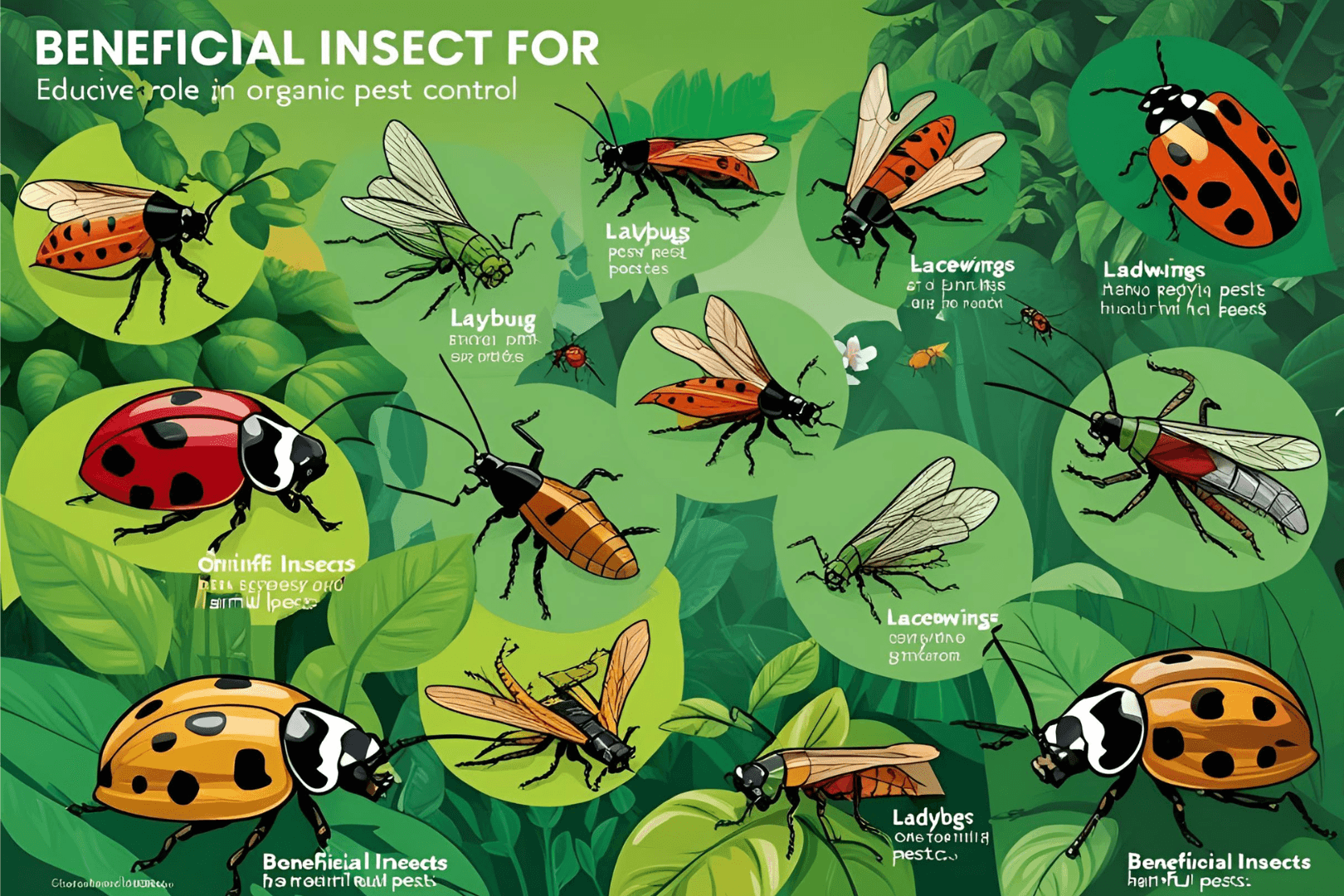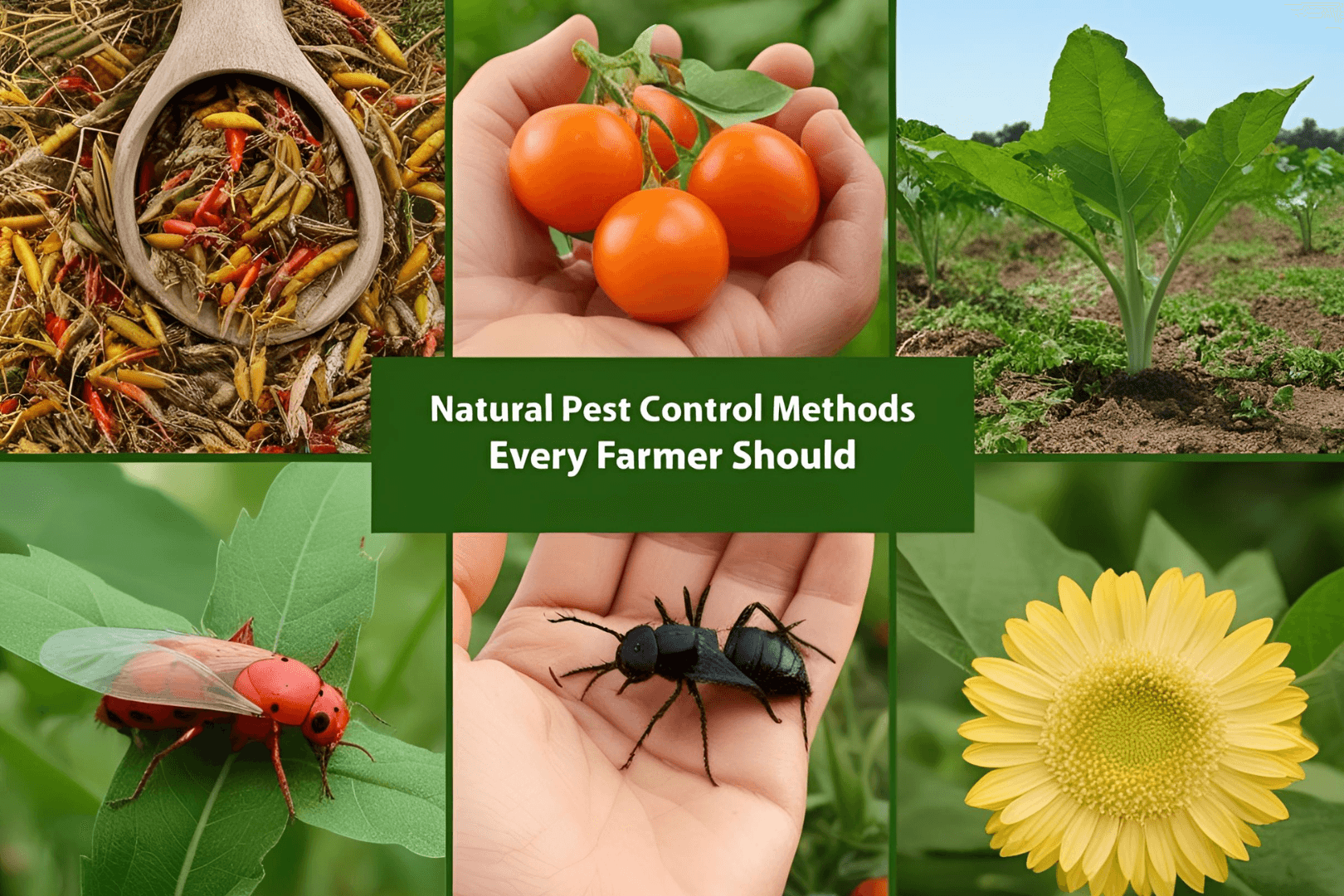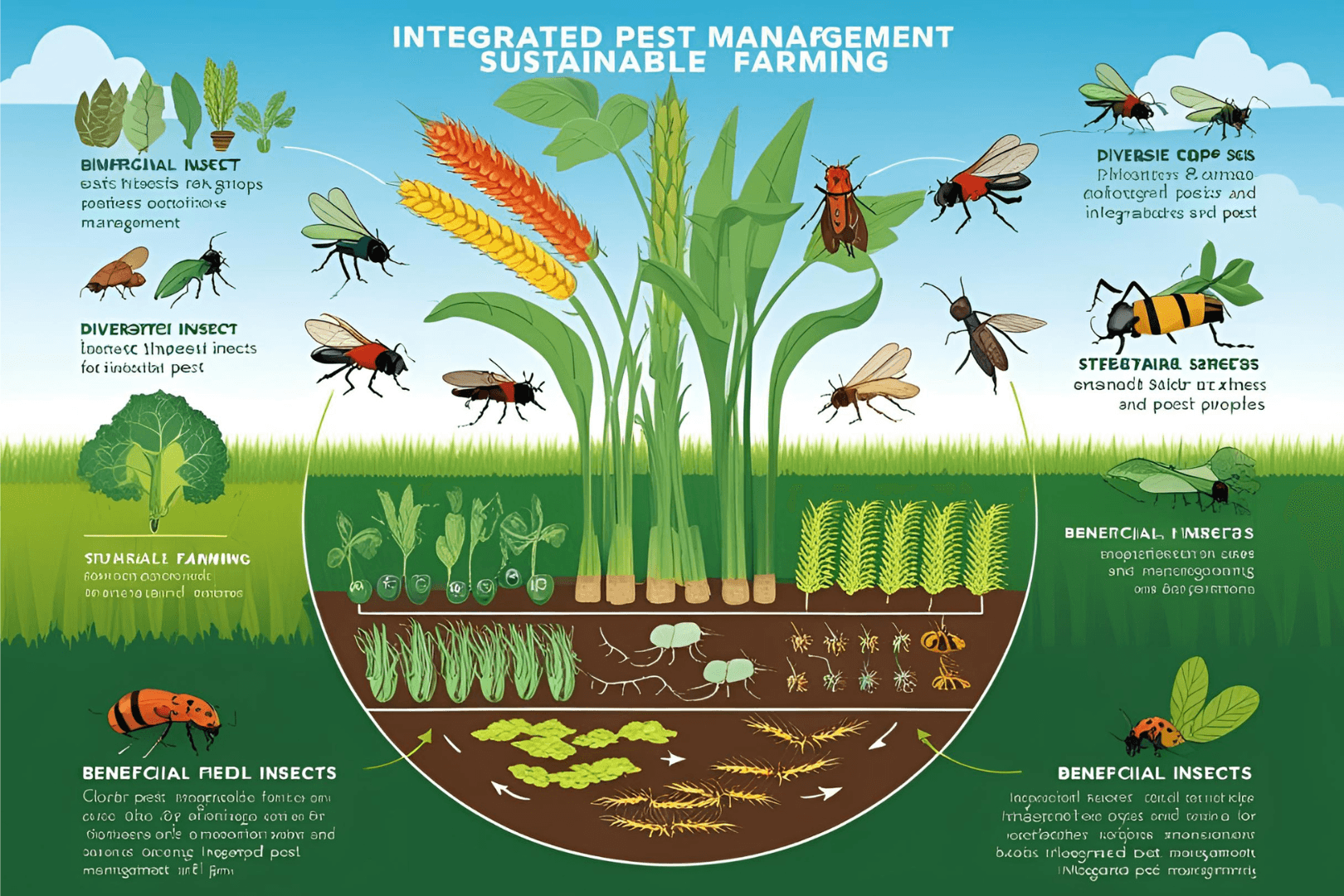Introduction
Beneficial insects play a crucial role in maintaining ecological balance in agricultural fields. These insects help control harmful pests, reducing the need for chemical pesticides and promoting sustainable farming. Understanding which insects are beneficial and how to attract them can significantly improve crop health and yield.
1. What Are Beneficial Insects?
Beneficial insects are those that help farmers by preying on harmful pests or aiding in pollination. These insects naturally keep pest populations in check, reducing damage to crops.
Types of Beneficial Insects
- Predators – These insects feed on harmful pests. Examples:
- Ladybugs (eat aphids, mites, and scale insects)
- Lacewings (consume aphids, thrips, and caterpillars)
- Spiders (trap and eat a variety of harmful insects)
- Parasitoids – These insects lay their eggs inside or on pests, which eventually kill them. Examples:
- Parasitic Wasps (control caterpillars, whiteflies, and leaf miners)
- Tachinid Flies (target caterpillars, beetles, and stink bugs)
- Pollinators – While not directly controlling pests, these insects support plant growth by increasing fruit and seed production. Examples:
- Bees (vital for pollination)
- Butterflies (help in cross-pollination)
2. Benefits of Beneficial Insects in Farming
- Reduces Pesticide Use: Natural predators and parasitoids lower the need for harmful chemicals.
- Improves Soil & Plant Health: Lesser pesticide residue leads to healthier crops.
- Increases Crop Yield: Pollinators enhance fruit and vegetable production.
- Cost-Effective: Once established, beneficial insects provide long-term pest control.
3. How to Attract Beneficial Insects to Your Farm
- Plant Flowering Crops: Marigold, sunflower, coriander, and fennel attract pollinators and predators.
- Reduce Pesticide Use: Excessive chemical use can kill beneficial insects.
- Provide Shelter: Creating diverse habitats like hedgerows, grass strips, or insect hotels supports their population.
- Use Companion Planting: Growing plants like basil, mint, and dill alongside main crops attracts natural pest controllers.
4. Common Harmful Pests & Their Natural Enemies
| Pest | Beneficial Insect |
|---|---|
| Aphids | Ladybugs, Lacewings |
| Caterpillars | Parasitic Wasps, Birds |
| Whiteflies | Green Lacewings, Wasps |
| Thrips | Minute Pirate Bugs |
| Spider Mites | Predatory Mites |
Conclusion
Encouraging beneficial insects in farming is an effective and eco-friendly way to manage pests. By reducing pesticide dependence and creating a favorable environment for these insects, farmers can improve crop health, increase yields, and promote sustainable agriculture.
📞 For More Information on Pest Control Strategies
📧 ratanmetalsjaipur@gmail.com
📞 +91 7014180458
Implement natural pest control methods today and boost your farm’s productivity! 🌱🐞




